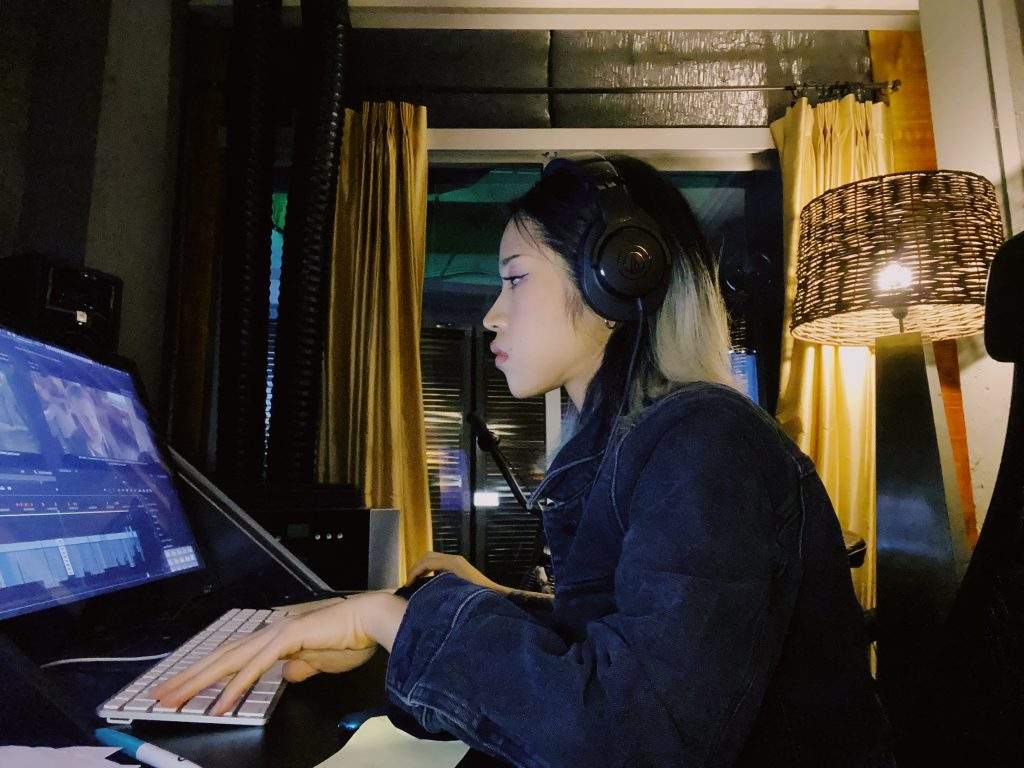Chaos; it’s not what most people gravitate towards. Editor Sijie Liu, who also goes by the name Leslie Liu, embraces challenges and the creative solutions cultivated through them. When Director/Writer-Zhidong Yi approached the editor with a need for his film A Cthulhu Story that threatened its manifestation, Leslie was more than happy to use her skill to help realize Yi’s vision. This feat was impressive considering that after principal photography was completed, Zhidong realized the footage did not match what he had imagined.
Sijie was granted the freedom to build the story as she saw fit during the post production process to emphasize the dramatic intensity of the footage and evoke the strongest emotional response and engagement of the audience. If there was any question as to Leslie Liu’s contributions, A Cthulhu Story not only earned her a Best Editing Award at the New York Movie Awards but also resulted in the film winning Best Thriller at the Florence Film Awards, Best Picture at the Hollywood Gold Awards, and Best Fantasy at the New York Movie Awards.

Great filmmaking is rooted in vision and enthusiasm. Leslie relates, “Working with [director] Zhidong Yi is quite an interesting experience. He is a very creative person full of wild and unconstrained ideas.” While Zhidong’s excitement was infectious, Ms. Liu concedes that the ideas he proposed and the footage obtained were not always realistic in regards to manifesting the story in an intuitive manner for the audience.
Making use of her editing and writing abilities (Leslie holds a BFA degree in dramatic writing), she proposed the idea of creating a new story which resembles the original premise but presented a new perspective and tone. The collaboration between director and editor was consuming, often resulting in impromptu calls in the middle of the night and nocturnal editing sessions.
Leslie confides, “I wasn’t burdened by this redirection of the story through the editing process. I think there were something like five different stories that I could have made with what I was given; the opportunity to shape the story with my own interpretation was a truly enjoyable process.”
The story is revealed to the audience as events occur on timelines thirty years apart. Gehrm (played by Shannon Lenahan known for his work on the iconic daytime TV series General Hospital) is seen in the past checking into a hotel and setting up a camera. In present day, a young photographer called Ricky (Josiah Smith) takes his newly acquired vintage camera to get the film developed which he discovered inside it.
When Gehrm is seen setting up a wire with bells in his room, we understand that there is something yet to be revealed. Meanwhile, the present day developing room is about to announce what happened to Gehrm three decades ago in that hotel room. What would ordinarily be mundane moments in this film serve to heighten the anticipation we feel as the horror looms. Gehrm seems overwhelmed by an unseen force or presence that stalks him. A shocking photo beckons Ricky to seek out the same hotel room and investigate.
Sometimes the effects of Ms. Liu’s work goes unknown to the audience but is strongly felt, such as with scenes that she deleted altogether. However, scenes like the one in which the photographer (Gehrm) from the past begins to feel the presence and effects of an otherworldly presence while smoking in his car, these loudly proclaim the importance of Leslie’s contributions. As the man begins to have a headache, voices, and odd sounds are audible.
As he struggles to get to his hotel room, an overpowering atmosphere of anxiety and nervousness is palpable thanks to Ms. Liu’s utilization of jump cuts and tempo. Later, when this man is attacked in his hotel room, the editing choice to cut between the photographer in the future and these past events serves to increase the panic of the moment in choosing not to overtly show the attack but rather the anticipation of the photo being developed which will reveal all.
Leslie describes, “I always strive to apply my storytelling ability in post-production to depict a story that evokes the strongest emotional response and engagement of the audience. I feel rebuilding the story to make the it more compelling is the most interesting part in the post-production process.”
Writer-Arlen Gann